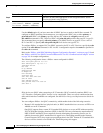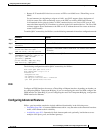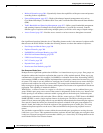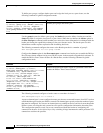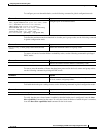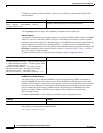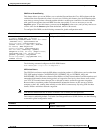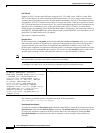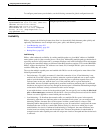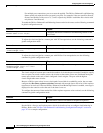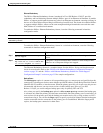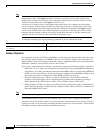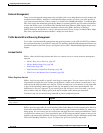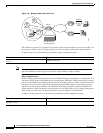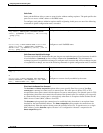
Configuring Data-Link Switching Plus
DLSw+ Configuration Task List
BC-302
Cisco IOS Bridging and IBM Networking Configuration Guide
78-11737-02
LLC1 Circuits
Support for LLC1 circuits more efficiently transports LLC1 UI traffic across a DLSw+ cloud. With
LLC1 circuit support, the LLC1 unnumbered information frames (UI) are no longer subject to input
queueing and are guaranteed to traverse the same path for the duration of the flow. This feature improves
transportation of LLC1 UI traffic because there is no longer the chance of having a specifically routed
LLC1 UI frame broadcast to all remote peers. The circuit establishment process has not changed except
that the circuit is established as soon as the specifically routed LLC1 UI frame is received and the
DLSw+ knows of reachability for the destination MAC address. Furthermore, the connection remains in
the CIRCUIT_ESTABLISHED state (rather than proceeding to the CONNECT state) until there is no UI
frame flow for a MAC/SAP pair for 10 minutes.
This feature is enabled by default.
Dynamic Peers
In TCP encapsulation, the dynamic option and its suboptions no-llc and inactivity allow you to specify
and control the activation of dynamic peers, which are configured peers that are activated only when
required. Dynamic peer connections are established only when there is DLSw+ data to send. The
dynamic peer connections are taken down when the last LLC2 connection using them terminates and the
time period specified in the no-llc option expires. You can also use the inactivity option to take down
dynamic peers when the circuits using them are inactive for a specified number of minutes.
Note Because the inactivity option may cause active LLC2 sessions to be terminated, you should not use
this option unless you want active LLC2 sessions to be terminated.
To configure a dynamic peer, use the following command in global configuration mode:
The following command specifies a dynamic peer with TCP encapsulation:
dlsw remote-peer 0 tcp 10.23.4.5 dynamic
Promiscuous Peer Defaults
If you do not configure a dlsw remote-peer statement on the DLSw+ router, then you must specify the
promiscuous keyword on the dlsw local-peer statement. The promiscuous keyword enables the router
to accept peer connection requests from those routers that are not preconfigured. Setting the dlsw
prom-peer-defaults command allows the user to determine various settings for the promiscuous
transport.
Command Purpose
Router(config)# dlsw remote-peer list-number tcp
ip-address [backup-peer [ip-address |
frame-relay interface serial number dlci-number
| interface name]] [bytes-netbios-out
bytes-list-name] [circuit-weight weight]
[cluster cluster-id] [cost cost] [dest-mac
mac-address] [dmac-output-list
access-list-number] [host-netbios-out
host-list-name] [inactivity] [dynamic]
[keepalive seconds] [lf size] [linger minutes]
[lsap-output-list list] [no-llc minutes]
[passive] [priority] [rif-passthru
virtual-ring-number] [tcp-queue-max size]
[timeout seconds]
Configures a dynamic peer.



